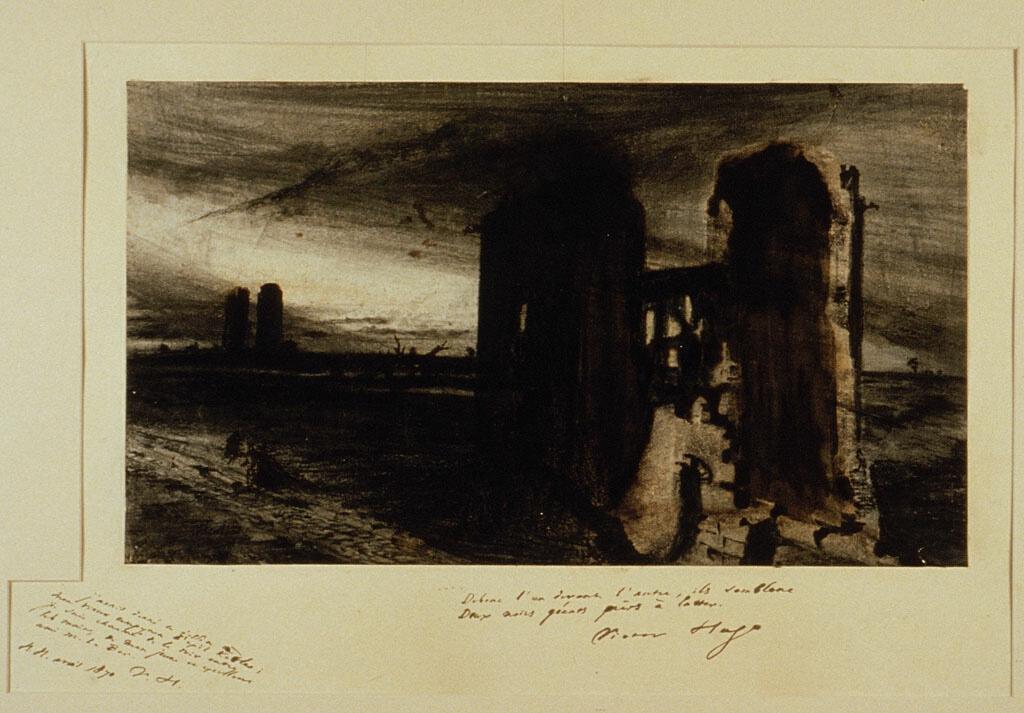Hugo, Victor (1802-1885)
Paysage avec deux châteaux en ruines (Landscape with Two Ruined Castles)
1847
Brush with brown ink and brown wash, over black crayon and graphite, with shellac, on paper, 26.8 x 46.5 cm
Art Institute of Chicago, Chicago
In addition to being a major presence in nineteenth-century French literature, Victor Hugo holds a unique position in the realm of the visual arts. His drawings established him as one of the most influential draftsmen of his time, a bridge between the romantics and the symbolists. It is the large-scale abstract works, such as this drawing, broadly handled, unclear, brooding, and mysterious, which are Hugo’s greatest legacy. This particular drawing was obviously highly prized by Hugo; only his major works received lengthy dedications, and this drawing is inscribed on both the mat and frame. The inscription reads in part: “Standing, facing each other, they resemble two black giants ready for battle.” (AIC)
